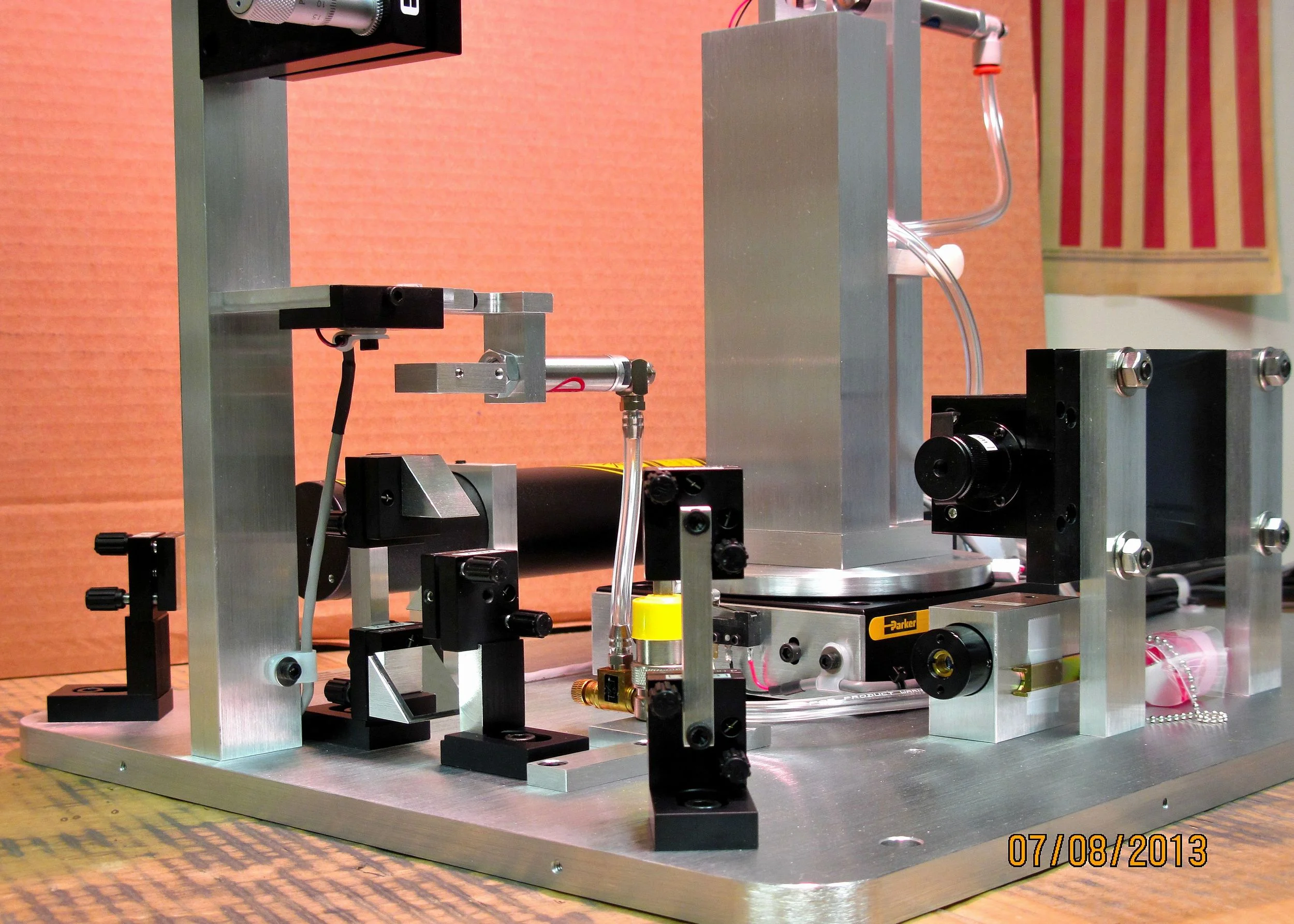Monitoring of Phosphorus and Other Dopant Concentrations in Silicon Dioxide
The accuracy of the Model 2010/M’s refractive index measurement makes possible monitoring of the concentration of phosphorus (and potentially other dopants) in PSG and BPSG films with a combination of speed, simplicity, and sensitivity unmatched by other techniques.
The phosphorus monitoring application is based on the fact that as phosphorus concentration in SiO2 increases, refractive index also increases. For the typical process, a one percent increase in the weight percent of phosphorus (e.g., from three weight percent to four) increases index by roughly .003. Since the Model 2010/M can routinely resolve index changes of .001 (±.0005) a typical phosphorus resolution of 1/3 weight percent (± 1/6 weight percent) can be obtained. To be conservative, however, a practical resolution of 1/2 weight percent (± 1/4 weight percent) is a more reasonable expectation due to index variation caused by film constituents other than phosphorus.
Since thickness is normally monitored in most production processes, substitution of a Model 2010/M thickness-index measurement for an existing thickness-only measurement permits monitoring of phosphorus concentration on a routine run-to-run basis “for free”. In addition, PC-2000 monitoring of phosphorus and other dopants offers the quickest feedback of any technique since no sample preparation or patterning is required and measurements require only 20 seconds. Finally, a sensitivity of ±0.25 weight percent is sufficient for most applications and comparable to the sensitivity of competitive techniques.
To monitor doping with the 2010/M, some initial direct measurements of doping (via wet chemical or some other direct measurement technique) are required so that a correlation curve relating doping and index can be established for the process in question. The adjacent figure (ref. 1) is an example of such a correlation curve for phosporus-doped SiO2. Once the correlation curve is established, a tight refractive index window can be established for the process to ensure the doping control which is required.
Of course there are other factors (most notably deposition temperature) which can affect the refractive index of doped oxide, and the 2010/M’s ±0.0005 index resolution provides extremely sensitive and immediate feedback of any change in the film deposition process. In production processes, however, where deposition conditions are not intentionally varied and the goal is run-to-run consistency, the Model 2010/M is used as a quick “go-no go” screening measurement immediately after every run. As long as film index does not depart from the expected window, there is low probability that any feature of the deposition process, including dopant concentration, has changed, and no need to proceed with more expensive and time-consuming direct measurements of doping concentration.
To date, dopant monitoring with the Model 2010/M has centered on phosphorus in PSG and BPSG films. Some users have reported a small, but detectable, effect of boron on SiO2 index, but it is doubtful that the resulting resolution of boron concentration will be acceptable for normal processes. We are unaware of other work on the effect of dopants other than phosphorus or boron on the index of silicon dioxide or other dielectric films using prism coupling measurements. If your application involves nonstandard dopants or dielectric materials, please contact Metricon for assistance in determining whether a correlation between dopant level and index occurs in your process.
In summary, the Model 2010/M permits production monitoring of phosphorus and other dopants in SiO2 with a combination of speed, simplicity, and sensitivity unmatched by other techniques. Because of the slowness and expense of other methods, phosphorus concentration is often monitored far less frequently than is desirable for good process control. Moreover, there is often a significant time lag between when samples are submitted for analysis and when analysis results are available. If the 2010/M’s 20-second thickness-index measurement is simply substituted for an existing thickness-only measurement, sensitive and immediate feedback on phosphorus concentration can be achieved without the addition of any process-measurement overhead.
References
- A. C. Adams and S. P. Murarka, “Measuring the Phosphorus Concentration in Deposited Phosphosilicate Films”, J. Electrochem. Soc., 126, 334 (1979).
- H. J. Lee, C. H. Henry, K. J. Orlowsky, R. F. Kazarinov, and T. Y. Kometani, “Refractive Index Dispersion of Phosphosilicate Glass, Thermal Oxide, and Silicon Nitride Films on Silicon”, Appl. Opt., 27, 4104 (1988).
- J. E. Tong, K. Schertenleib, and R. A. Carpio, “Process and Film Characterization of PECVD Borophosphosilicate Films for VLSI Applications,” Solid State Tech., 27, 161 (January 1984).


